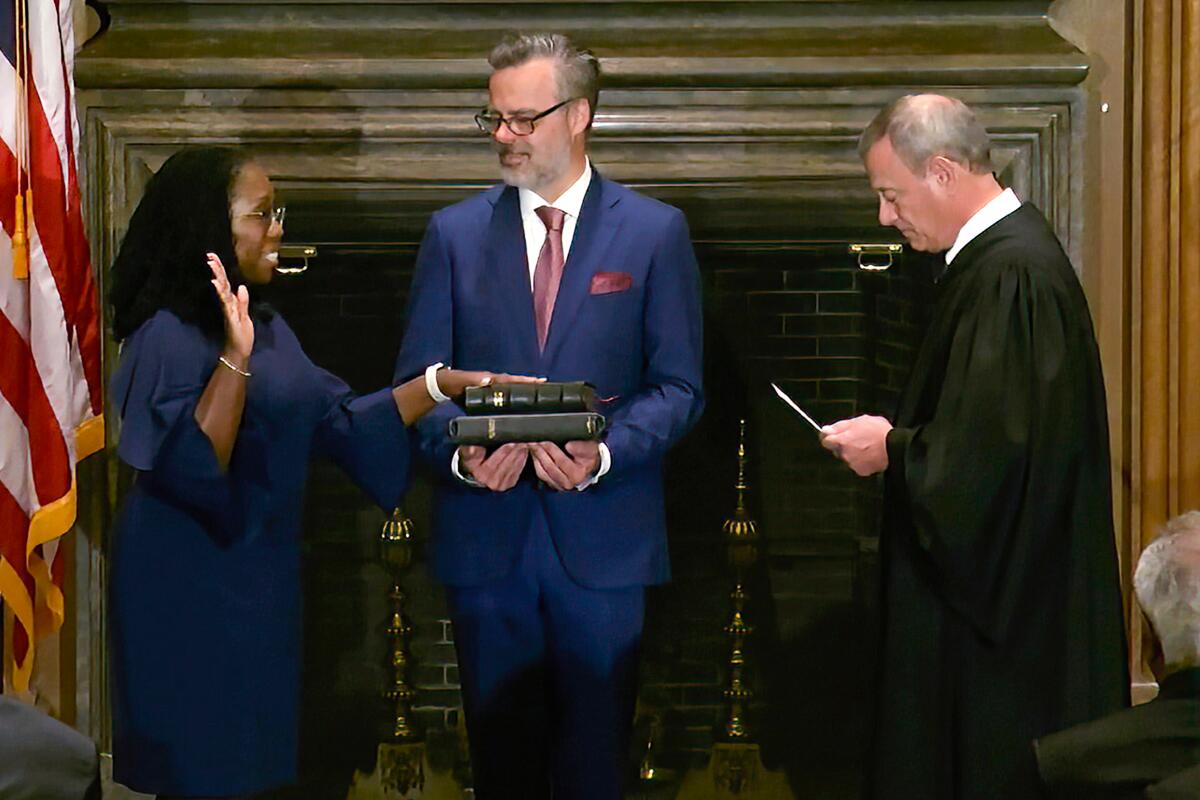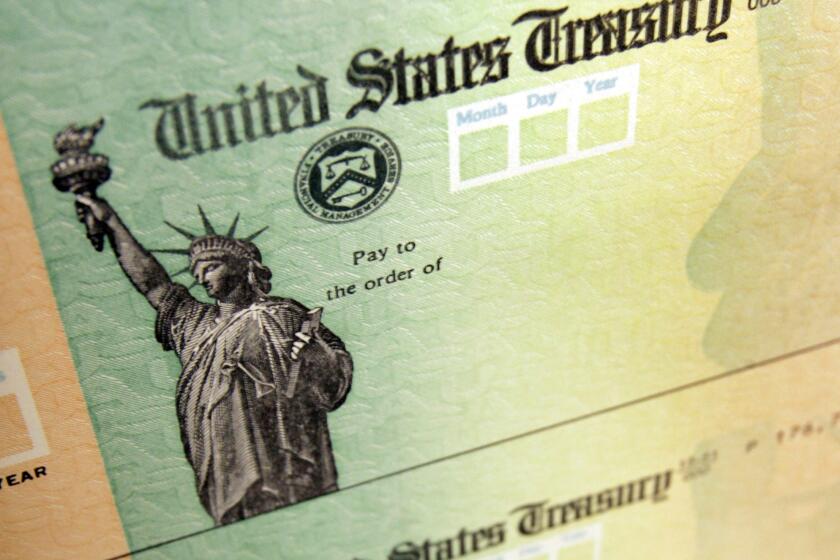Ketanji Brown Jackson is sworn in, becoming the first Black woman on U.S. Supreme Court

WASHINGTON — Ketanji Brown Jackson was sworn in as the newest Supreme Court justice Thursday, becoming the first Black woman on the nation’s highest court.
The 51-year-old Jackson is the court’s 116th justice, and she took the place of the justice for whom she once worked. Justice Stephen G. Breyer’s retirement took effect at noon.
Moments later, joined by her family, Jackson recited the two oaths required of Supreme Court justices, one administered by Breyer and the other by Chief Justice John G. Roberts Jr.
“With a full heart, I accept the solemn responsibility of supporting and defending the Constitution of the United States and administering justice without fear or favor, so help me God,” Jackson said in a statement issued by the court. “I am truly grateful to be part of the promise of our great Nation. I extend my sincerest thanks to all of my new colleagues for their warm and gracious welcome.”
Roberts welcomed Jackson “to the court and our common calling.” The ceremony was streamed live on the court’s website. All the justices except for Neil M. Gorsuch attended the swearing-in, the court said. There was no immediate explanation for Gorsuch’s absence.
Jackson, a federal judge since 2013, is joining three other women, Justices Sonia Sotomayor, Elena Kagan and Amy Coney Barrett — the first time four women will serve together on the nine-member court.
President Biden nominated Jackson in February, a month after Breyer, 83, announced he would retire at the end of the court’s term, assuming his successor had been confirmed. Breyer’s earlier-than-usual announcement and the condition he attached were a recognition of the Democrats’ tenuous hold on the Senate in an era of hyper-partisanship, especially surrounding federal judgeships.

The Senate confirmed Jackson’s nomination in early April, by a 53-47 vote that included support from three Republicans.
Jackson had been in a sort of judicial limbo since, remaining a judge on the federal appeals court in Washington, D.C., but not hearing any cases. Biden elevated her to that court from the district judgeship to which she was appointed by President Obama.
Glynda Carr, president of Higher Heights for America, an organization that advocates for the growth of Black women’s political power, said the timing of Jackson’s swearing-in was bittersweet.
“Although we celebrate her today, one Black woman or a cohort of Black women can’t save this democracy alone. We are a piece of it and we are doing our work, our part. She’s going to forever reshape and shape that court. But she’s just a piece of the work that needs to happen moving forward,” Carr said.
Because of Jackson’s appointment, Judith Browne Dianis, a Black lawyer in Washington, said she intends to end her protest against joining the Supreme Court Bar. She started it when Justice Clarence Thomas was confirmed in 1991. She said that even the series of rulings from the court over the last week to which she objected cannot take away from the significance of Thursday’s ceremony.
“This is a momentous occasion and it’s still a beautiful moment,” said Dianis, executive director of the civil rights group Advancement Project.
But, Dianis added, “she’s joining the court at a time when conservatives are holding the line and trying to actually take us back, because they see the progress that’s being made in our country. It’s like the Civil War that never ended. That’s the court that she’s joining.”
Jackson will be able to begin work immediately, but the court has finished the bulk of its work until the fall, apart from emergency appeals that occasionally arise. That will give her time to settle in and familiarize herself with the roughly two dozen cases the court has agreed to hear starting in October as well as hundreds of appeals that will pile up over the summer.
She helps form the most diverse court in its 232-year history and is the first former public defender to be a justice. The court that Jackson is joining is the most conservative that it has been since the 1930s. She is likely to be on the losing end of important cases, which could include examinations of the role of race in college admissions, congressional redistricting and voting rights that the court, with its 6-3 conservative majority, will take up next term.
The Supreme Court building now is surrounded by fencing, and justices and their families have 24-hour protection by the U.S. Marshals, the result of a law passed days after a man carrying a gun, knife and zip ties was arrested near Justice Brett M. Kavanaugh’s Maryland house after threatening to kill the justice. The bill was introduced in May shortly after the leak of a draft court opinion to overrule Roe vs. Wade to end the constitutional right to abortion, a final version of which the court approved last week.
The court issued final opinions earlier Thursday after a momentous and rancorous term that included the overturning of Roe. One of Thursday’s decisions limited how the Environmental Protection Agency can use the nation’s main anti-air-pollution law to reduce carbon dioxide emissions from power plants, a blow to the fight against climate change.
More to Read
Get the L.A. Times Politics newsletter
Deeply reported insights into legislation, politics and policy from Sacramento, Washington and beyond. In your inbox three times per week.
You may occasionally receive promotional content from the Los Angeles Times.










